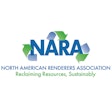As of the time of this writing, initiation of the US Food and Drug Administration 's (FDA) pilot program to accept generally recognized as safe (GRAS) notifications for animal feed and pet food ingredients is still pending. However, in anticipation of the start of the program later in 2010, several presentations on the subject were given at the Association of American Feed Control Officials (AAFCO) meeting in January. Most interesting is how GRAS notifications compare and contrast with the other primary means to allow for use of new ingredients.
Compared to the legally binding approval under the food additive petition (FAP) process through FDA, the AAFCO animal feed ingredient definition process consists of an informal FDA review of the data. Technically, an AAFCO-defined ingredient is still an unapproved food additive, but for all practical purposes, feed control officials are extremely unlikely to question the use of the ingredient in animal feed or petfood (provided it meets any specified conditions of use) regardless of the process employed.
While FDA does not make an independent judgment as to the safety of the subject of a GRAS notification, it is presumed that feed control officials will also consider a "no questions" response by FDA as sufficient tacit indication of ingredient acceptability.
An AAFCO definition generally requires less data than FAP, though the need to demonstrate safety and utility can still be sizable. Completion of either process can take years. Although a GRAS notification requires the same data as FAP, theoretically FDA should be able to respond to a GRAS notification faster than the other two options. However, the upfront time it may take the submitter to compile and evaluate the data can be longer than the other methods.
Any of the three options can be burdensome to the submitter in both time and resources required. In theory, a manufacturer may be able to bring the ingredient to market quicker through the GRAS notification process. However, the requirement for data to be freely accessible to the public may be difficult, if not wholly infeasible, in the case of a new ingredient. Also, a determination of GRAS by a firm typically requires that an expert panel be convened to review the data, which may add significant resource requirements compared to the other methods.
If data suggest a potential target animal, human food or environmental safety issue, FAP is usually most appropriate. In fact, if FDA determines existence of a safety risk during an AAFCO definition review, it most often will cease further review of the proposed definition and require the firm to submit an FAP.












